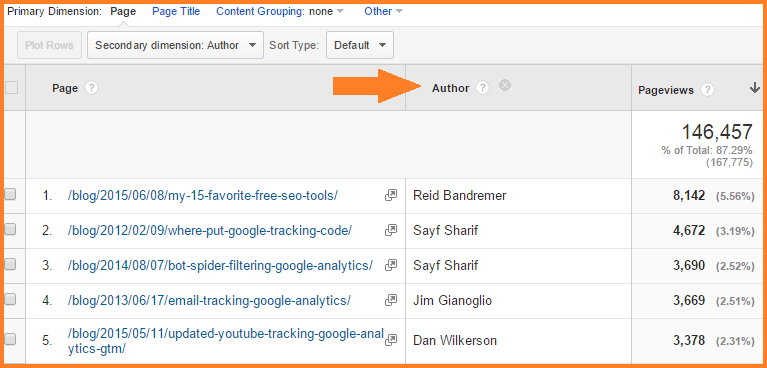Decoding the Importance of Secondary Dimension in Google Analytics: All About Its Relevance and Impact
In the world of digital analytics, the utilization of second dimensions within Google Analytics serves as a critical device for critical much deeper layers of information insights. The importance of additional dimensions exists in their capacity to supply a nuanced view of customer habits and interaction with a website or system.
Comprehending Second Dimensions in Google Analytics
The understanding of second dimensions in Google Analytics is essential for obtaining much deeper understandings right into individual actions and website performance. While main measurements supply basic information points such as web traffic sources and web page sights, secondary measurements enable a much more nuanced evaluation by providing extra context to these primary metrics. By incorporating additional measurements, customers can sector and filter their information to discover patterns and patterns that might not be right away evident.

Revealing the Conveniences of Additional Measurements
Structure upon the foundational understanding of second dimensions in Google Analytics, checking out the advantages they offer exposes invaluable insights for enhancing information evaluation and decision-making. By including second dimensions, customers can dive deeper into their information, gaining a much more detailed sight of customer actions, content performance, and other key metrics.
Moreover, additional measurements give context to main data, providing additional layers of information that can help in understanding customer interactions and preferences. This improved understanding can direct calculated decision-making, causing even more targeted marketing projects, website optimizations, and general enhanced performance. Basically, additional dimensions function as an effective tool for opening much deeper insights and optimizing the energy of Google Analytics for companies and web site proprietors.
Leveraging Additional Measurements for Boosted Insights
By using the power of second dimensions in Google Analytics, companies can uncover deeper understandings that drive notified decision-making and tactical optimization initiatives. Leveraging additional measurements allows businesses to delve past surface-level data and get a much more thorough understanding of user actions, audience demographics, web traffic resources, and site performance. By combining primary measurements like website traffic resources with additional dimensions such as geographical location or device group, organizations can identify which devices or regions are driving the most beneficial web traffic to their internet site.
Additionally, second dimensions make it possible for services to sector and evaluate data better, assisting them determine fads, patterns, and chances that might have or else gone unnoticed. By utilizing secondary measurements, organizations can customize their marketing techniques, material, and user experience to far better satisfy the demands and choices of their target audience. Fundamentally, leveraging second dimensions in Google learn this here now Analytics empowers organizations to make data-driven decisions that result in boosted efficiency, boosted ROI, and lasting growth.

Effect of Additional Dimensions on Data Evaluation
Enhancing information evaluation via the utilization of additional dimensions in Google Analytics gives services with a much deeper understanding of their on-line performance metrics. By incorporating secondary dimensions, such as time of day, geographical location, or device category, companies can uncover beneficial understandings that might have been overlooked with key measurements alone. This boosted degree of granularity permits for even more precise division of data, allowing services to identify patterns, patterns, and connections that can drive calculated decision-making.

Maximizing Possible: Additional Capacities Techniques
One vital approach is to combine secondary dimensions with primary measurements to obtain a detailed view of customer communications. Combining the main dimension of 'source/medium' with secondary dimensions like 'touchdown page' or 'device group' can reveal which networks are driving website traffic to specific web pages or just how user behavior differs across tools.
Moreover, utilizing secondary measurements to section data based on individual demographics, habits, or technology can assist services tailor their advertising and marketing initiatives to specific target market segments. This targeted method can lead to boosted conversion rates, improved user experiences, and ultimately, raised ROI. By making best use of the capacity of secondary dimensions in Google Analytics, companies can make enlightened choices, enhance their online visibility, and drive sustainable growth.
Conclusion
Finally, second measurements in Google Analytics play an essential function in giving deeper insights and boosting information analysis. By utilizing additional dimensions efficiently, services can obtain a much more comprehensive understanding of individual behavior and web site performance. Integrating additional measurements into information analysis methods can result in more informed decision-making and enhanced general efficiency. It is crucial for companies to utilize the power of secondary dimensions to maximize their possible and accomplish greater success in their on-line undertakings (what is a “secondary dimension” in google analytics?).
While key dimensions give essential information points such as traffic sources and web page views, second measurements enable for an extra nuanced analysis by giving extra context to these key metrics. By combining key measurements like web traffic sources with additional dimensions such as geographical location or gadget group, companies can identify which tools or regions are driving the most valuable website traffic to their internet site.
By incorporating second measurements, such as time of day, geographical area, or device category, services can uncover valuable understandings that might have been overlooked with key dimensions alone. One key strategy is to integrate secondary dimensions with key measurements to gain an extensive sight of individual interactions. Coupling next page the main dimension of 'source/medium' with additional measurements like 'touchdown page' or 'tool category' can reveal which networks are driving traffic to details web pages or just how user habits differs across gadgets.